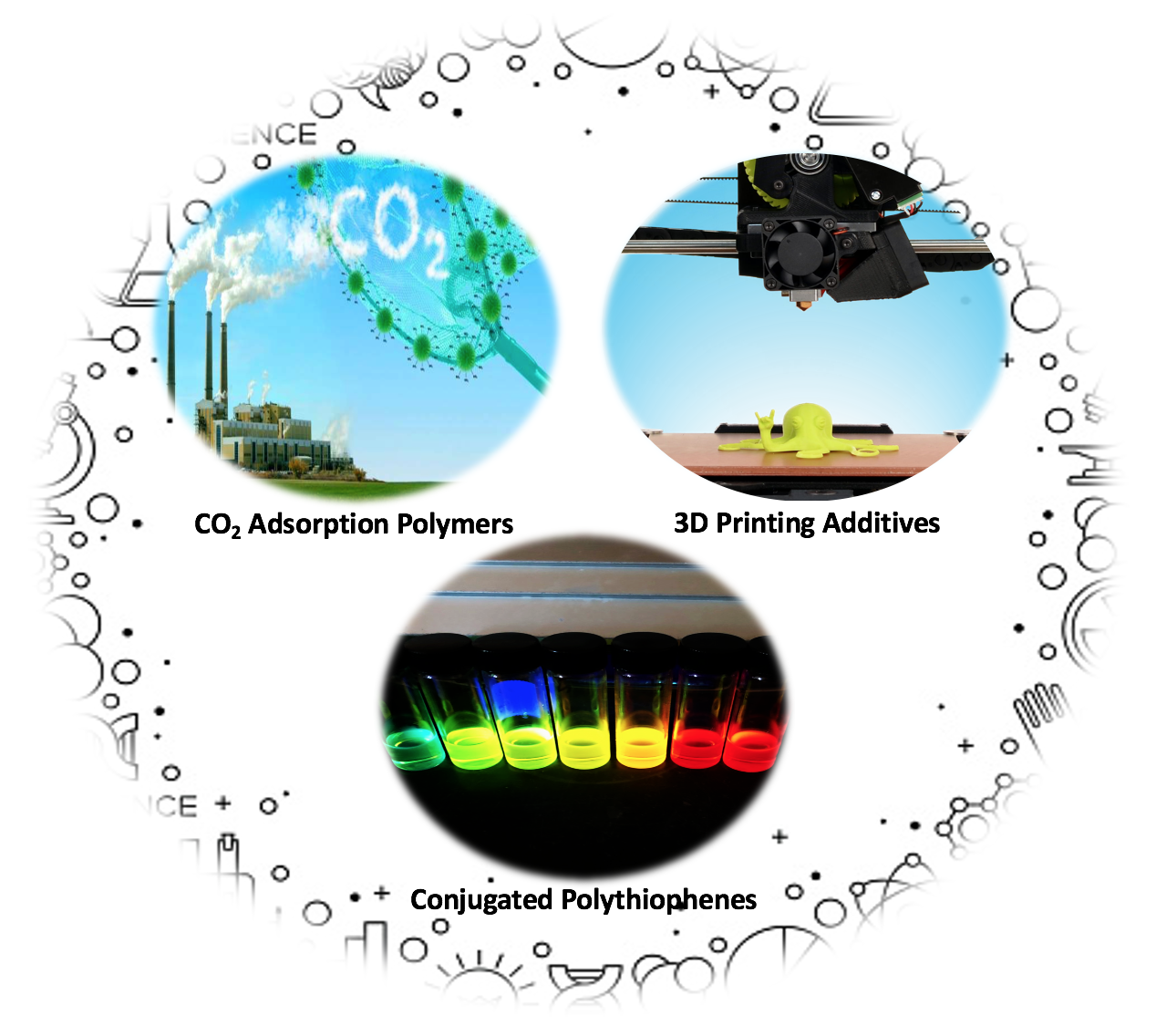CO2 Capture and Thin Film Properties (Danielle Chun)
Greenhouse gasses are harmful to the ozone layer and contribute to global climate change. Since 82% of the human contribution is CO2 emissions, our solution is amidine-functionalized polymers for post-combustion capture and sequestration of CO2. Amidines demonstrate high CO2-fixing efficiency and capture/release properties at ambient temperature. We will surface-graft our tailored polymers to study design-structure-property relationships of the molecular design with CO2 adsorption properties. This will ultimately deliver a better view of polymer materials in adsorption technologies.
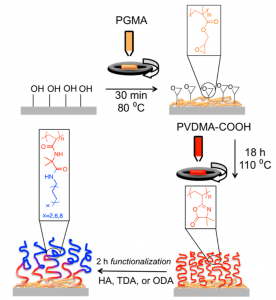 Procedure Used To Create PVDMA Brushes by Attaching End-Functional Chains to a Silicon Substrate through a Thin PGMA Layer and Subsequent in situ Functionalization by Small Molecule Amines |
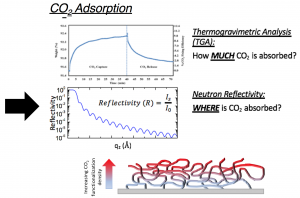 Data for CO2 adsorption studies on both TGA (top) and NR (middle). The bottom image shows the anticipated CO2 density profile for our resulting polymer brushes. |
Conjugated Polymers (Abigail Linhart, KJ Bell, Manvendra Singh)
Conjugated polymers have shown promising results for applications such as flexible electronics, energy storage devices and solar cells. Two main structural features that determine performance of the conjugated polymers are their band gap and thin film morphology. We want to understand how the photophysics of the conjugated polymers is related these two factors. We synthesize novel monomeric units and functional side-chain groups to expand understanding of design-structure-property relationships in conjugated polymers.
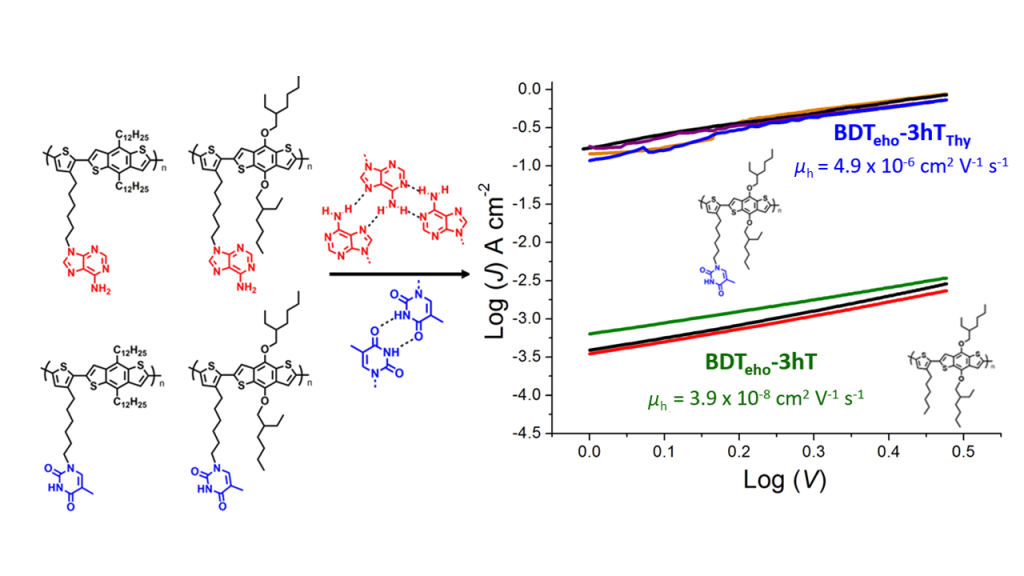
Efficient synthesis and characterization, and optical, electrochemical and transport properties of complementary pairs of nucleobase-functionalized, fully conjugated copolymers based on benzo[1,2-b:4,5-b′]-dithiophene (BDT) and 3-hexylthiophene (3hT), which is a quintessential low bandgap polymer.
Additive Manufacturing (Nia Parker, Evan Holt)
Additive Manufacturing (AM), or 3D Printing, is widely used to produce prototypes or end-stage functional parts of complex designs. Although parts can be printed rapidly and avoid the cost of molds, they lack the material properties needed for their target applications due to the formation of voids and poor adhesion between layers. Because of this limitation, we are investigating how parts manufactured by the AM subset known as fused filament fabrication (FFF) can be reinforced by the incorporation of nanoscopic additives.
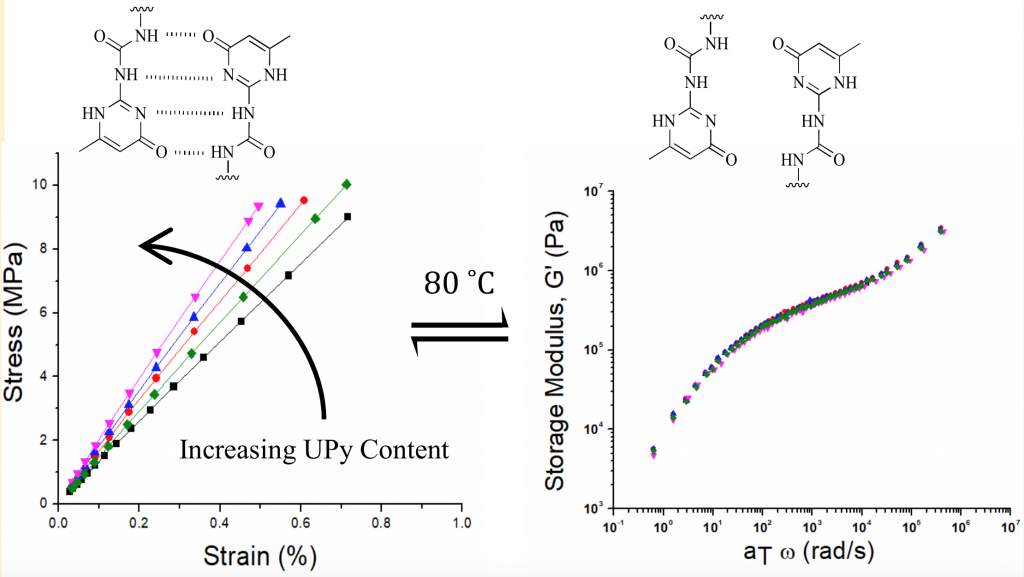 Reversible, nonbonded intermolecular interactions, such as multidentate hydrogen bonding, provides a novel route to overcome the mechanical property limitations of 3D printing materials without affecting melt processability. |
 Schematic representation of polymer nanocomposites, illustrating the changes in segmental mobility that are envisioned in the vicinity of silica nanoparticles in PNCs and PGNCs. |
